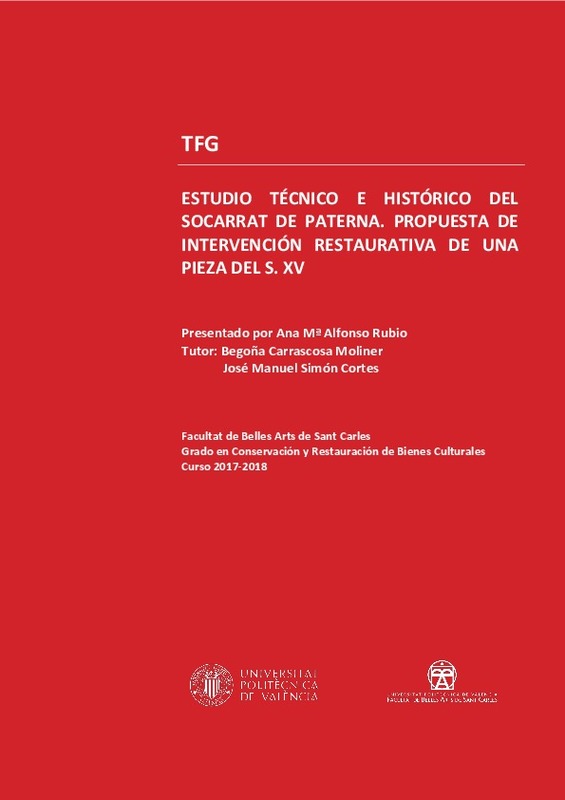JavaScript is disabled for your browser. Some features of this site may not work without it.
Buscar en RiuNet
Listar
Mi cuenta
Estadísticas
Ayuda RiuNet
Admin. UPV
ESTUDIO TÉCNICO E HISTORICO DEL SOCARRAT DE PATERNA. PROPUESTA RESTAURATIVA DE UNA PIEZA DEL S. XV
Mostrar el registro completo del ítem
Alfonso Rubio, AM. (2018). ESTUDIO TÉCNICO E HISTORICO DEL SOCARRAT DE PATERNA. PROPUESTA RESTAURATIVA DE UNA PIEZA DEL S. XV. http://hdl.handle.net/10251/110286
Por favor, use este identificador para citar o enlazar este ítem: http://hdl.handle.net/10251/110286
Ficheros en el ítem
Metadatos del ítem
| Título: | ESTUDIO TÉCNICO E HISTORICO DEL SOCARRAT DE PATERNA. PROPUESTA RESTAURATIVA DE UNA PIEZA DEL S. XV | |||
| Autor: | Alfonso Rubio, Ana María | |||
| Director(es): | Simón Cortés, José Manuel | |||
| Entidad UPV: |
|
|||
| Fecha acto/lectura: |
|
|||
| Resumen: |
[EN] In this Final Degree Project, we look into the unique characteristics of the Socarrat . We contextualize and study the most common pathologies of this cultural heritage, focusing later on a Socarrat belonging to a ...[+]
[ES] En éste Trabajo Final de Grado se dan a conocer las características singulares del Socarrat, se contextualizan y estudian las patologías más comunes de este bien cultural, centrándose a continuación en un socarrat ...[+]
|
|||
| Palabras clave: |
|
|||
| Derechos de uso: | Reserva de todos los derechos | |||
| Editorial: |
|
|||
| Titulación: |
|
|||
| Tipo: |
|
recommendations
Este ítem aparece en la(s) siguiente(s) colección(ones)
-
BBAA - Trabajos académicos [5086]
Facultad de Bellas Artes







